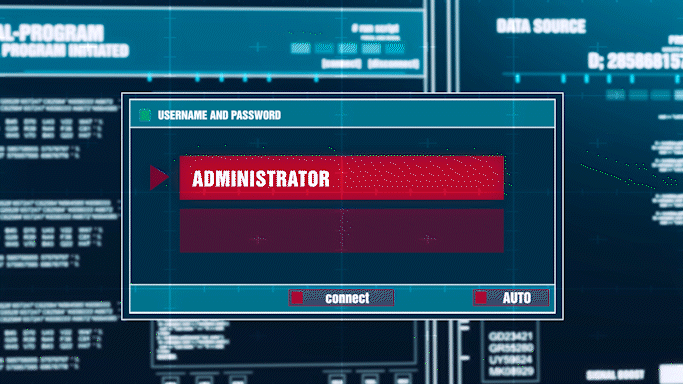Introduction
Ransomware attacks have surged over the past year, posing a significant threat to businesses worldwide. As a CTO, it's crucial to understand the nature of these attacks and how to protect your business from potential threats. In this guide, I will explain what ransomware is, its impact on businesses, and the necessary steps to safeguard your organization against these cyber threats.
1. Understanding Ransomware
Ransomware is a type of malicious software (malware) that encrypts the victim's data, rendering it inaccessible. The attacker then demands a ransom payment, usually in cryptocurrency, in exchange for the decryption key to regain access to the data. These attacks can target both individual users and large organizations, causing significant financial and operational damages.
2. The Impact of Ransomware on Businesses
Ransomware attacks can have severe consequences for businesses, including:
- Financial loss: The cost of ransom payments, combined with the expenses incurred in recovering from the attack, can be substantial. Additionally, businesses may face regulatory fines if they fail to protect sensitive customer data adequately.
- Operational disruption: Ransomware attacks can disrupt daily operations, causing downtime and reducing productivity. In some cases, businesses may be unable to continue operations until the encrypted data is recovered.
- Reputation damage: Ransomware attacks can tarnish a business's reputation, resulting in loss of customer trust and potential long-term consequences for the organization's growth.
3. How to Protect Against Ransomware Threats
To secure your business against ransomware threats, it is essential to adopt a multi-layered approach that includes prevention, detection, and recovery measures. Here are some steps to take:
- Keep Software and Systems Up-to-Date
Ensure that all software, including operating systems, applications, and firmware, are up-to-date with the latest security patches. Regular updates can help protect your systems against known vulnerabilities that ransomware attackers might exploit.
- Implement Regular Backups
Create regular backups of your critical data and store them in a secure, offsite location. This will allow you to recover your data in case of a ransomware attack without having to pay the ransom. Ensure that you test your backups regularly to verify their integrity and usability.
- Employ Robust Antivirus and Anti-malware Solutions
Install reliable antivirus and anti-malware software on all devices within your organization. Regularly update these tools to ensure they can detect and prevent the latest ransomware variants.
- Train Employees on Cybersecurity Best Practices
Educate your employees about ransomware and other cyber threats. Provide them with training on cybersecurity best practices, such as how to identify phishing emails, safely browse the internet, and properly handle sensitive data.
- Implement Access Controls and Network Segmentation
Restrict user access to sensitive data and limit the number of individuals with administrative privileges. Implement network segmentation to separate critical systems and data from the rest of the network, reducing the potential spread of ransomware within your organization.
- Monitor for Suspicious Activity
Regularly monitor your network for signs of suspicious activity, such as unusual data transfers or unauthorized access attempts. Implement intrusion detection and prevention systems (IDPS) to help identify and block potential ransomware attacks in real-time.
- Develop an Incident Response Plan
Create a comprehensive incident response plan that outlines the steps your organization will take in the event of a ransomware attack. This plan should include communication protocols, roles and responsibilities, and procedures for data recovery and system restoration. Regularly review and update this plan to ensure its effectiveness.
- Enable Email Filtering and Secure Web Gateways
Implement email filtering solutions to block phishing emails and malicious attachments, which are common delivery methods for ransomware. Secure web gateways can also help prevent ransomware infections by blocking access to malicious websites and downloads.
- Implement Multi-Factor Authentication (MFA)
Enable multi-factor authentication (MFA) for all user accounts, especially those with administrative privileges. MFA adds an extra layer of security by requiring users to provide multiple forms of identification before accessing sensitive systems and data.
- Collaborate with Industry Partners and Law Enforcement
Collaborate with other businesses in your industry and law enforcement agencies to share information about ransomware threats and best practices for prevention. This collective approach can help improve your organization's ability to detect and respond to ransomware attacks.
4. What to Do if Your Business is Hit by a Ransomware Attack
In the event of a ransomware attack, take the following steps:
- Isolate the affected systems: Disconnect the infected devices from the network to prevent the spread of ransomware to other systems.
- Notify the appropriate authorities: Report the ransomware attack to law enforcement agencies and any relevant regulatory bodies.
- Activate your incident response plan: Follow your organization's incident response plan, which should outline the steps to take in the event of a ransomware attack.
- Assess the damage: Determine the extent of the attack, the systems and data affected, and the potential impact on your business operations.
- Begin recovery efforts: Restore affected systems and data from your secure backups. If you do not have backups or the backups are compromised, consult with cybersecurity experts to explore other recovery options.
- Communicate with stakeholders: Inform your employees, customers, and other stakeholders about the attack, its impact on your business, and the steps you are taking to address the issue.
- Review and update your security measures: Conduct a thorough review of your cybersecurity practices and implement any necessary improvements to prevent future attacks.
Conclusion
Ransomware attacks pose a significant threat to businesses, and as a CTO, it's essential to understand the risks and take proactive steps to protect your organization. By implementing a comprehensive security strategy that includes prevention, detection, and recovery measures, you can help safeguard your business against ransomware threats and minimize their impact on your operations.

- CTORescues.com
- April 2, 2023
- Brody, Daniel
- COPYRIGHT 2022 YOM SHORE VENTURES LLC ALL RIGHTS RESERVED